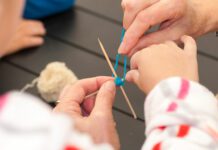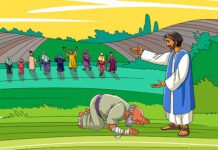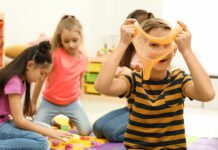Many children’s ministry programs continue to operate on a paradigm based upon adult education models. Children are not small adults and they have unique needs, capabilities and learning styles. An effective children’s ministry requires an understanding and recognition of the characteristics of children’s growth, development, needs and cognitive/learning abilities. These principles of child development and learning inform and guide decisions to make sure your program meets each child’s needs.
Development occurs in a relatively orderly sequence with later abilities, skills and knowledge building on those already acquired. Knowledge of typical development of children within the age span served by a children’s ministry provides a general framework to guide the design of the learning environment, realistic curriculum goals, and creating appropriate learning experiences.
Development proceeds at varying rates from child to child, as well as unevenly within different areas of a child’s functioning. Each child is a unique person with an individual pattern of growth, as well as individual learning style. It also proceeds in predictable directions toward greater complexity, organization and internalization.
Children are active learners drawing on direct physical and social experience, as well as culturally transmitted knowledge. This is how they construct their own understanding of the world around them. They contribute to their own development as they strive to make meaning out of their daily experiences in the home, church and in their community. They develop and learn best in the context of a community where they are safe and valued, their physical needs are met and they feel psychologically secure.
Consistency
Consistent, positive relationships with a limited number of adults and other children is the basis for healthy human development. These consistent relationships provide the context for children to learn about themselves and their world. They need to develop positive, constructive relationships with other people.
Consistency can also be supported through following a familiar routine and providing orientation to the unfamiliar. Children do best in a consistent structure that limits the fear of the unknown. A well-defined schedule helps children learn the order of events that occur each Sunday.
Consistency is also important in the regulation of children’s behavior. The rules for behavior must be consistent over time and among adults. Unswerving enforcement of rules is reassuring to children in order for them to understand that this is a predictable place—a place that I can trust.
Transitioning
A transition is the movement of children from one activity to another or one place to another. Children are in transition during clean up, while waiting for a venue to begin or while moving from one place to another. Young children, especially, can have difficulty adjusting to movement from one environment to another. There are no rules about what is an acceptable waiting time. However, common sense tells us that the longer and more often the children wait, the more likely they will become restless and misbehave. Children are naturally energetic, so being actively engaged during routines, including transitions, eliminates wasted time and provides an opportunity for learning.
Learning Styles
Children learn from active participation through several styles of learning—auditory, visual, and kinesthetic. Visual learners need to see the teacher’s facial expressions to fully understand the content of a lesson. They think in pictures and learn best from visual diagrams and written materials. Auditory learners learn best through verbal discussion and listening to what others have to say. Written information may have little meaning until it is heard. The tactile/kinesthetic person learns best though a hands-on approach. They may find it hard to sit still for long periods of time and might be distracted by their need for activity and exploration. The younger the child, the higher the need is for kinesthetic learning. Activities and teaching methods should allow for all three learning styles.












